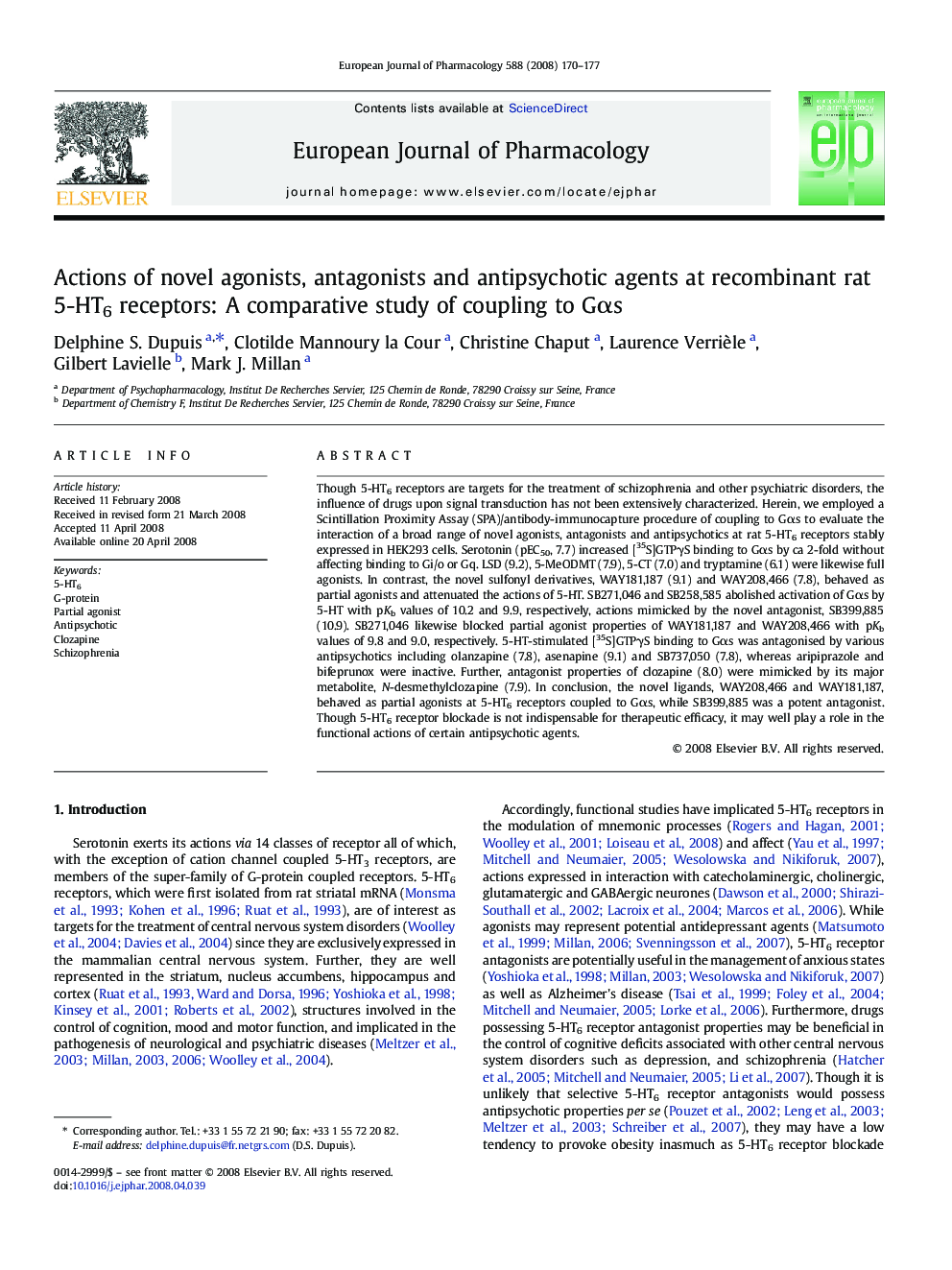| Article ID | Journal | Published Year | Pages | File Type |
|---|---|---|---|---|
| 2535179 | European Journal of Pharmacology | 2008 | 8 Pages |
Though 5-HT6 receptors are targets for the treatment of schizophrenia and other psychiatric disorders, the influence of drugs upon signal transduction has not been extensively characterized. Herein, we employed a Scintillation Proximity Assay (SPA)/antibody-immunocapture procedure of coupling to Gαs to evaluate the interaction of a broad range of novel agonists, antagonists and antipsychotics at rat 5-HT6 receptors stably expressed in HEK293 cells. Serotonin (pEC50, 7.7) increased [35S]GTPγS binding to Gαs by ca 2-fold without affecting binding to Gi/o or Gq. LSD (9.2), 5-MeODMT (7.9), 5-CT (7.0) and tryptamine (6.1) were likewise full agonists. In contrast, the novel sulfonyl derivatives, WAY181,187 (9.1) and WAY208,466 (7.8), behaved as partial agonists and attenuated the actions of 5-HT. SB271,046 and SB258,585 abolished activation of Gαs by 5-HT with pKb values of 10.2 and 9.9, respectively, actions mimicked by the novel antagonist, SB399,885 (10.9). SB271,046 likewise blocked partial agonist properties of WAY181,187 and WAY208,466 with pKb values of 9.8 and 9.0, respectively. 5-HT-stimulated [35S]GTPγS binding to Gαs was antagonised by various antipsychotics including olanzapine (7.8), asenapine (9.1) and SB737,050 (7.8), whereas aripiprazole and bifeprunox were inactive. Further, antagonist properties of clozapine (8.0) were mimicked by its major metabolite, N-desmethylclozapine (7.9). In conclusion, the novel ligands, WAY208,466 and WAY181,187, behaved as partial agonists at 5-HT6 receptors coupled to Gαs, while SB399,885 was a potent antagonist. Though 5-HT6 receptor blockade is not indispensable for therapeutic efficacy, it may well play a role in the functional actions of certain antipsychotic agents.
